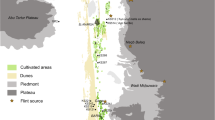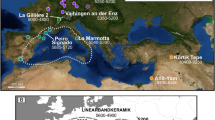Abstract.
During the restoration of the main church in Breda (the Netherlands), the city archaeologists rediscovered a tomb with remains of the ancestors of the Dutch royal family. Research was carried out prior to the reburial of the remains. The combination of historical, osteological, dendrochronological and 14C data provided names and dates for 7 of the 8 embalmed bodies. The tomb was in use between A.D. 1475 and 1526. Archaeobotanical results could be compared with several recipes for embalming from the same period. Strikingly many macroremains were found where mainly pollen was expected. This could mean the bodies were resting on a bed of herbs and spices, but it could also have been due to the lack of confidence of the embalmers; they may have used all the available aromatics to conceal the smell of the corpse. At least some of the species were imported from the Mediterranean and/or subtropical regions, but others were probably locally cultivated.
Similar content being viewed by others
Author information
Authors and Affiliations
Additional information
Received August 27, 2001 / Accepted April 1, 2002
Rights and permissions
About this article
Cite this article
Vermeeren, C., van Haaster, H. The embalming of the ancestors of the Dutch royal family. Veget Hist Archaeobot 11, 121–126 (2002). https://doi.org/10.1007/s003340200013
Published:
Issue Date:
DOI: https://doi.org/10.1007/s003340200013




